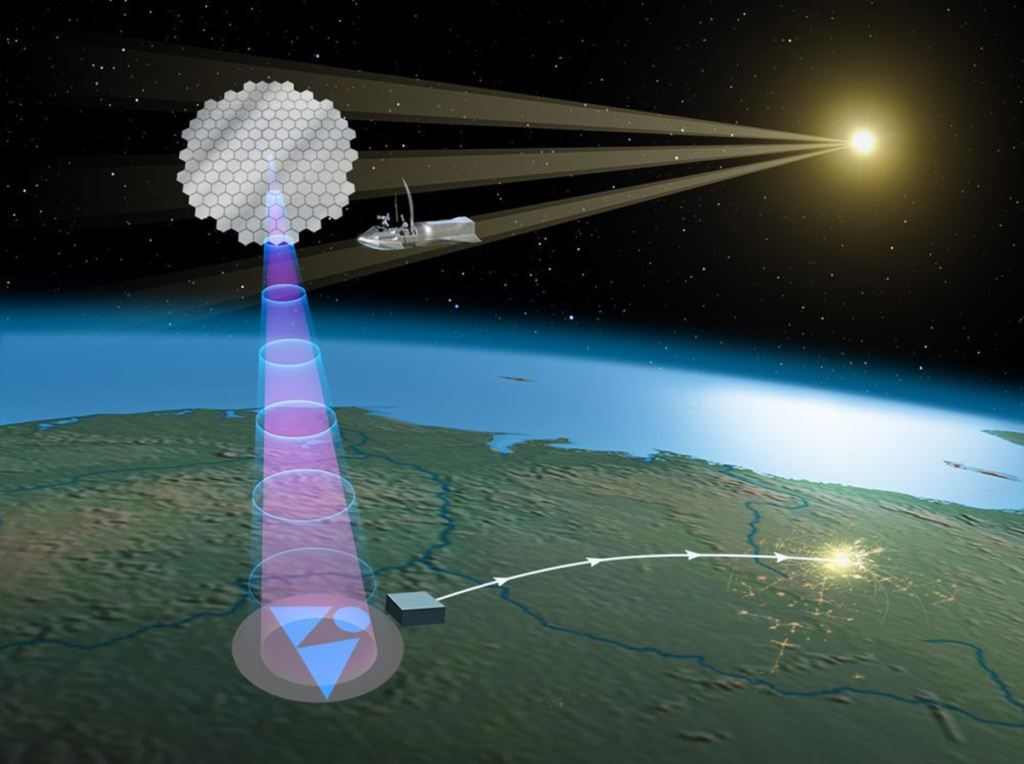As far as the global economy is concerned, there are no winners or losers when it comes to energy sources at the moment. This means that, as we tap the very last reserves of accessible fossil fuels, even the most far-fetched or far-off “climate solutions” are being pursued, including carbon capture, nuclear fusion, and even space-based solar power (SBSP). As these technologies are developed, additive manufacturing (AM), as the newest and most flexible of production techniques, will play key roles in all of them.
Demonstrating this fact is a new partnership between large-format 3D printing company Orbital Composites and Virtus Solis, who intend to create the world’s first SBSP station. The two startups have signed a memorandum of understanding to build an SBSP station that will utilize “cutting-edge” photovoltaic arrays to collect energy from the Sun while in orbit and then transport it to Earth.
3D Printing for Space-based Solar Power
We covered Orbital Composites in 2015 when the Campbell, California startup first began as a developer of unique 3D printing nozzles. The company has since evolved to offer both advanced robotic extrusion systems and services utilizing those systems. It’s also taken on a number of partnerships with high-profile companies and organizations to advance and demonstrate its technologies. These include the US Space Force, Axiom Space, Northrop Grumman, Lockheed Martin, Oak Ridge National Laboratory and more. The company describes itself as “specializ[ing] in mass-producing SBSP satellites equipped with phase-arrays and power electronics,” as it has received an Small Business Innovation Research (SBIR) award for in-space servicing, assembly and manufacturing and for hardened cubesats.
Multi Robot Printing Demonstration from Orbital Composites on Vimeo.
Meanwhile, Virtus Solis is an early-stage startup dedicated to wireless power transmission (WPT) relying on microwave WPT of solar energy from space to Earth. The founders come from highly respected firms, with CEO John Bucknell formerly acting as Vice President of Propulsion at Divergent Technologies and Principal Engineer for the SpaceX Raptor. The CTO, Edward Tate, was previously a Senior Director at Dassault Systemes and Managing Director of Exa.
The company is in the process of going from proof-of-concept to manufacturing, which it aims to accomplish in the next 18 months. While Virtus Solis designs the core SBSP technologies—”antenna arrays, power electronics, and modular mega-structure”—Orbital Composites will develop a scalable manufacturing process, as well as 3D print phase-array antennas and turnkey satellites before ultimately performing in-space service, assembly, and manufacturing (ISAM) of the Virtus SBSP station.

image courtesy of Virtus Solis.
Space-based Solar Power’s Moment in the Sun
Though the concept of SBSP has been around since Isaac Asimov published a short story titled “Reason” in 1941, academic research into the technology has been slow. The ability to remotely power a device wireless has been showcased at least as far back as 1964, when inventor William C. Brown demonstrated the ability to power a model helicopter with a microwave beam on Walter Cronkite’s CBS News show.
In the U.S., it experienced a brief exploration from 1974 to 1986, before it was largely neglected in the country. Japanese researchers have devoted more energy to the concept, with the Japan Aerospace Exploration Agency (JAXA) stating a goal of performing first trials in 2025.
Most recently, a team from Caltech was able to send a prototype to space that was able to beam a small amount of electricity to Earth—enough to light up a pair of LEDs. Once the news of the experiment hit, there was a flurry of announcements related to new research and commercial endeavors, including this one from Orbital Composites.
While I am admittedly a layperson, I have been a fan of SBSP since I first learned of it while working with the Enterprise In Space project, which pursued an SBSP student project. So, though I don’t fully understand how the technology works, I daydream that all of the directed energy weapons programs are cover for SBSP research that will be combined with the world of IoT to see us begin beaming solar power to our devices via 5G (or 6, 7, 8, 9, or 10G) transmitters.
Of course, by then, we’ll have burned through all of our fuel and the Earth’s natural resources, so power beaming probably won’t bring us to the same level of industrial activity as we experience today. Plus, we’ll have to worry about such high levels of microwave energy radiating everything. Can’t be much worse than our current predicament, can it?
Subscribe to Our Email Newsletter
Stay up-to-date on all the latest news from the 3D printing industry and receive information and offers from third party vendors.
You May Also Like
Gorilla Sports GE’s First 3D Printed Titanium Cast
How do you help a gorilla with a broken arm? Sounds like the start of a bad joke a zookeeper might tell, but it’s an actual dilemma recently faced by...
Nylon 3D Printed Parts Made More Functional with Coatings & Colors
Parts 3D printed from polyamide (PA, Nylon) 12 using powder bed fusion (PBF) are a mainstay in the additive manufacturing (AM) industry. While post-finishing processes have improved the porosity of...
$25M to Back Sintavia’s Largest Expansion of Metal 3D Printing Capacity Since 2019
Sintavia, the digital manufacturing company specializing in mission-critical parts for strategic sectors, announced a $25 million investment to increase its production capacity, the largest expansion to its operations since 2019....
Velo3D Initiates Public Offering in a Bid to Strengthen Financial Foundations and Drive Future Growth
Velo3D (NYSE: VLD) has been among a number of publicly traded 3D printing firms that have attempted to weather the current macroeconomic climate. After posting a challenging financial report for 2023,...































